
DRY FLIES
BACK TO TABLE OF CONTENTS
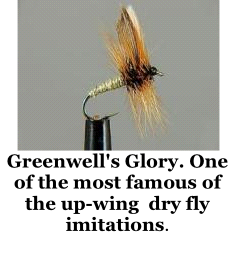 Dry flies, like their name implies are designed to be fished floating on top of the water. Obviously, therefore, they are fished on a floating line. They should be constructed of buoyant materials that ensure that they float, such as deer hair - which is hollow, cul de canard feathers - which have a natural oil content, or even manmade materials like closed cell foam or Antron. Furthermore, they should be constructed in such a way that they will float the right way up - the hook should hang in the water and act like a keel to give ballast and stability to the fly, otherwise they are likely to be blown off the water by the wind and give an unrealistic silhouette when seen from below.
Dry flies, like their name implies are designed to be fished floating on top of the water. Obviously, therefore, they are fished on a floating line. They should be constructed of buoyant materials that ensure that they float, such as deer hair - which is hollow, cul de canard feathers - which have a natural oil content, or even manmade materials like closed cell foam or Antron. Furthermore, they should be constructed in such a way that they will float the right way up - the hook should hang in the water and act like a keel to give ballast and stability to the fly, otherwise they are likely to be blown off the water by the wind and give an unrealistic silhouette when seen from below.
A nd that is the interesting thing about dry flies - the fish will only see them from below, so it is the silhouette these flies create that is the paramount attractor. This is a fundamental difference between the dry and the wet fly. In order to attract the fish a wet fly has to be moved through the water, imitating a swimming bug, fry or fly diving to lay eggs. A well constructed dry fly will have a sufficiently convincing silhouette that it can attract the fish without being moved. This means that most dries will be fished virtually static or just twitched. This video shows how lightweight dry fly fishing can produce great results.
nd that is the interesting thing about dry flies - the fish will only see them from below, so it is the silhouette these flies create that is the paramount attractor. This is a fundamental difference between the dry and the wet fly. In order to attract the fish a wet fly has to be moved through the water, imitating a swimming bug, fry or fly diving to lay eggs. A well constructed dry fly will have a sufficiently convincing silhouette that it can attract the fish without being moved. This means that most dries will be fished virtually static or just twitched. This video shows how lightweight dry fly fishing can produce great results.
This static presentation can lead to target fishing on still waters, where a fish may be spotted working its way towards you as it feeds off the top. Your fly is then cast in its path and left to be "found" by the fish. This requires knowledge of the trout's top of water feeding activity, keen observation and good casting skills but can bring impressive results. A similar technique can be used when river or stream fishing. A fish may be spotted taking flies from a specific holding spot. The object of the exercise is then to cast your dry fly upstream of the fish so that the fly's progress downstream intercepts the feeding fish. Here is a fine video of how this upstream fishing technique is performed.
Many dry flies are designed to imitate quite specific real flies and indeed sometimes a specific stage in a specific fly’s existence. So we will have different flies for the emerging stage of a mayfly, for instance, and the dun stage and the spinner stage and the spent stage. Keep your eyes on your surroundings to ensure your fly is "matching the hatch", not just in species but in stage of development too.
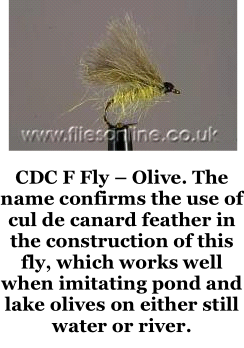 As previously mentioned, some materials, like CDC - cul de canard - lend themselves to use in dry fly construction because of their natural water repelling qualities. Alternatively, there are times when the closed cell foam used in the construction of the booby can be effective when making dry flies. Additional materials that have buoyant qualities are polypropylene, Antron, elk hair and buck tail. Because weight is a consideration in dry flies, they are normally made with a wire hook, which is much lighter than a forged variety. Some of the latest varieties of hooks have an upward pointing projection just behind the eye of the hook which is used to attach a parachute. A parachute is a bunch of buoyant material tied just behind the eye of the hook and gives additional buoyancy and ensures that the fly sits correctly on the surface.
As previously mentioned, some materials, like CDC - cul de canard - lend themselves to use in dry fly construction because of their natural water repelling qualities. Alternatively, there are times when the closed cell foam used in the construction of the booby can be effective when making dry flies. Additional materials that have buoyant qualities are polypropylene, Antron, elk hair and buck tail. Because weight is a consideration in dry flies, they are normally made with a wire hook, which is much lighter than a forged variety. Some of the latest varieties of hooks have an upward pointing projection just behind the eye of the hook which is used to attach a parachute. A parachute is a bunch of buoyant material tied just behind the eye of the hook and gives additional buoyancy and ensures that the fly sits correctly on the surface.
It is worth mentioning the leaders that should be used with dry flies. In the section on leaders we considered the differences between normal monofilament and fluorocarbon line. I suggested that the better of the two materials was fluorocarbon because of its refractive index and its higher strength for a given diameter. Here comes the disagreement!
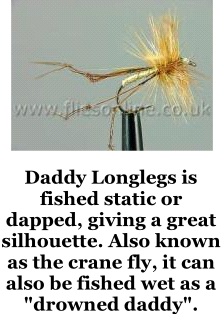 In dry fly fishing a fluorocarbon leader will sink in the water very quickly. While this is a desirable quality in other fishing techniques, it is something to be avoided in dry fly fishing. The dry fly sits on the water and the fluorocarbon leader sinks, creating a loop underwater that inhibits the strike when a fish takes. On the other hand, a monofilament leader will actually float on the meniscus of the water and this can mean that the fish may be spooked by the leader.
In dry fly fishing a fluorocarbon leader will sink in the water very quickly. While this is a desirable quality in other fishing techniques, it is something to be avoided in dry fly fishing. The dry fly sits on the water and the fluorocarbon leader sinks, creating a loop underwater that inhibits the strike when a fish takes. On the other hand, a monofilament leader will actually float on the meniscus of the water and this can mean that the fish may be spooked by the leader.
The answer is to use a de-greasing agent like fullers earth on the leader before use. A little diluted washing up liquid will do the job as well. The monofilament leader will then sit in the surface film or just under the surface, sinking much more slowly than fluorocarbon, giving closer contact with the fly. In fact, you only need to treat the last foot or so of the leader in front of the fly, leaving the rest of the leader floating on the water. As this short length of leader slowly sinks it will pull the fly towards the floating part of the leader. You can very slowly retrieve the line just enough to keep the fly separate from the floating leader. This advice applies to the tippet part of the leader and you should refer back to the chapter on Leaders to find out about the other part of a dry fly set-up - the furled leader or monofilament butt section.
Oliver Edwards has a few helpful suggestions about dry fly fishing
Dry fly fishing is normally associated with those wonderful summer evenings when the fish rise to follow the emerging fly life and you try to match the hatch. The emerger patterns are designed to emulate the fly as it appears at the surface and has to force its way through the surface tension. Bright days demand the full dressed flies to compete with the adult that hatches, dries its wings and quickly flies off. Damper, cooler days will see the emerging fly taking longer to dry their wings and a fly that sits lower in the water will give better results. Finally, the spinners (egg layers) and spent (dying) flies require a similarly designed imitation, probably with open wings and a semi submerged presentation.
 But there are other opportunities to use a dry fly and I have had considerable success on grey overcast days when the sun was absent all day and the fish ventured up in the water, often following clouds of daphnia. It pays on those grey days to keep your eyes open for a fish or two moving on the top of the water and adjust your fishing style accordingly. An orange offering is always a good place to start on those occasions. An ideal selection is the Shipman's buzzer, a very simple dry fly made of just a pinch of floating material tied to a hook with a few turns of thread to hold it in place. The essential colour is orange or red to imitate a clump of daphnia. Nothing could be simpler - or more effective when the circumstances are right.
But there are other opportunities to use a dry fly and I have had considerable success on grey overcast days when the sun was absent all day and the fish ventured up in the water, often following clouds of daphnia. It pays on those grey days to keep your eyes open for a fish or two moving on the top of the water and adjust your fishing style accordingly. An orange offering is always a good place to start on those occasions. An ideal selection is the Shipman's buzzer, a very simple dry fly made of just a pinch of floating material tied to a hook with a few turns of thread to hold it in place. The essential colour is orange or red to imitate a clump of daphnia. Nothing could be simpler - or more effective when the circumstances are right.
Dry flies should be dried between each cast for best presentation. Most of this drying occurs during airialisation before the next cast. But this can also be done with an absorbent cloth. Some anglers use a small tub of absorbent crystals to complete the task of drying. The fly is then made waterproof again with a tiny amount of a special grease - the most common brand is Gink - which is rubbed onto the finger tips and then gently rubbed onto the fly. Use just the smallest amount or you will end up with a gunky lump instead of a fly! Alternatively, a silicon spray is available which is sprayed onto the fly. Again, the byword is to use the smallest amount.
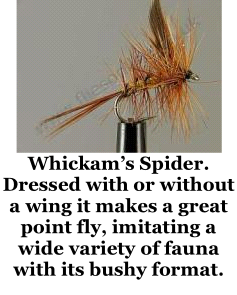 Sometimes you don't have to be a purist to get results from dry fly fishing. I once had great sport after cutting a piece of white closed cell foam - that's the same stuff used to make a booby eye or a razzler body - into the shape of a small fish and threading it onto a hook with a touch of glue to hold it in place. Use a waterproof pen to put a dot where the eye would be to act as a strike point. I think you can even buy this pattern in the shops now. I just cast it out in a likely looking spot - for example where shoals of fry might lurk - and twitched it every now and then just like a dying fry fish. Suddenly the water would erupt as a cannibal trout would attack the fry. Great sport, but the traditionalists would not call it dry fly fishing - and I don't care because it worked!
Sometimes you don't have to be a purist to get results from dry fly fishing. I once had great sport after cutting a piece of white closed cell foam - that's the same stuff used to make a booby eye or a razzler body - into the shape of a small fish and threading it onto a hook with a touch of glue to hold it in place. Use a waterproof pen to put a dot where the eye would be to act as a strike point. I think you can even buy this pattern in the shops now. I just cast it out in a likely looking spot - for example where shoals of fry might lurk - and twitched it every now and then just like a dying fry fish. Suddenly the water would erupt as a cannibal trout would attack the fry. Great sport, but the traditionalists would not call it dry fly fishing - and I don't care because it worked!
The final thoughts on dry fly fishing centre on the correct presentation of the fly and you should take a look at this video from Doug Swisher which addresses the problems of fishing a dry fly on moving water.
And now we turn to putting some dry flies together. David Camiss’ tying of Bob’s Bits is shown here and he introduces us to both dubbing and winding on a hackle:
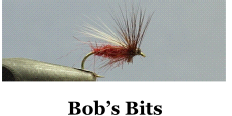
This video is David’s Water Beetle creation, which looks pretty good to me. This had been listed in the Dry Flies section, although it can be fished on a fast sinker in the same way as a booby. There is never a definitive categorisation for all flies!
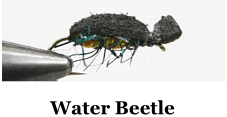
Here’s another Water Beetle creation I came across that includes a sighting spot. Try plopping it down under an overhanging tree and see what happens!
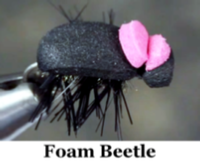
One of the more well known dry flies is the Shipman’s Buzzer, named after Dave Shipman who invented it to represent an emerger breaking through the surface water film.

Here’s a new take on the daddy longlegs fly.
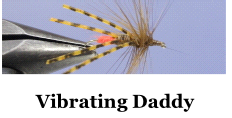
And this is the more conventional daddy longlegs creation.
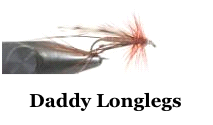
This is the Klinkhamer which introduces the use of a parachute into the tying.
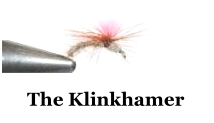
Many sedge fly tyings are made with spun deer hair - which can be a fiddly business. Here Dave Cammiss shows an alternative method which can be fished static or moving.
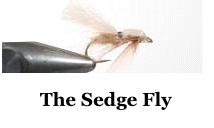
Finally, a Mayfly tying with some variations.